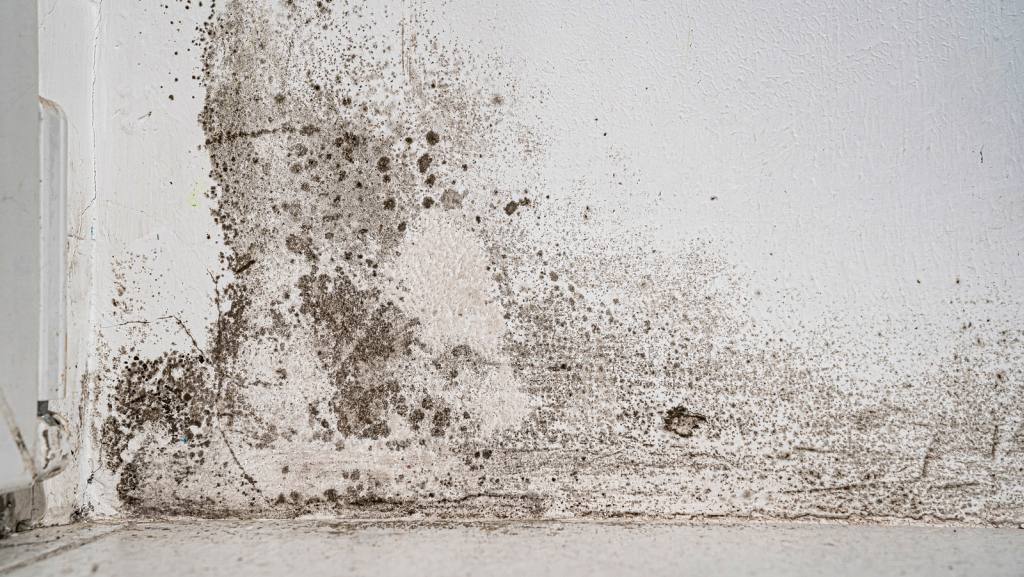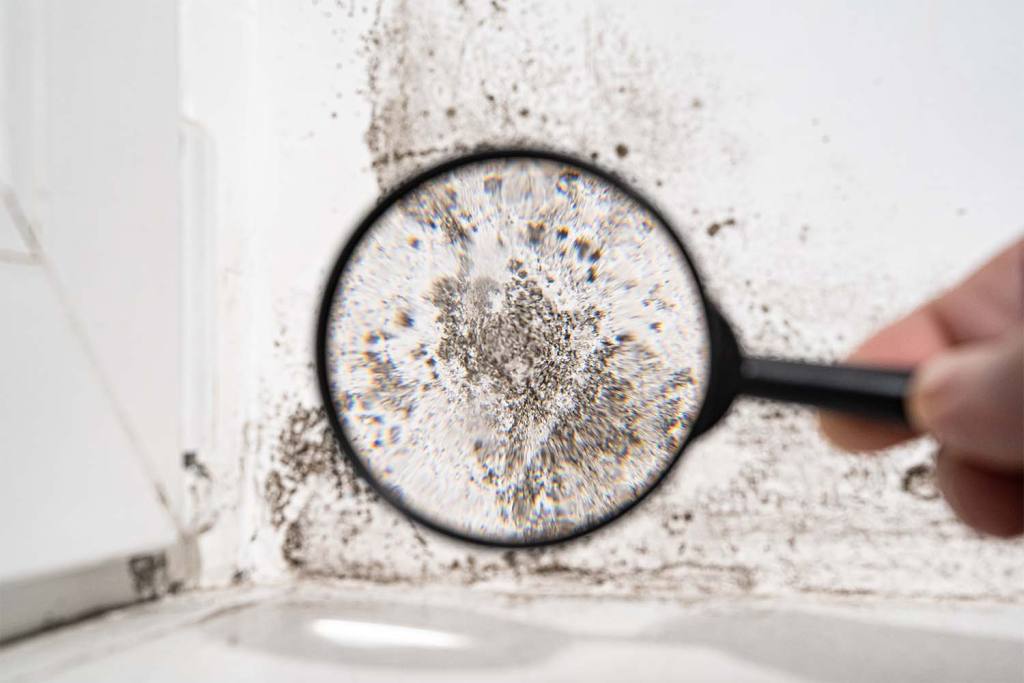Mold spores are often present in the air around homes, but they can only become a problem when they find the right environment to grow. High humidity, warmth, and darkness will create ideal conditions for mold to thrive.
There are many symptoms of mold sensitivity like watery eyes, a runny nose, sneezing, itching, coughing, wheezing, difficulty breathing, headaches, and fatigue. Prolonged exposure to mold can also increase sensitivity, potentially leading to more severe allergic reactions over time.
Indoor environments can make mold-related issues much worse, especially with molds like Stachybotrys and Aspergillus, which can produce harmful mycotoxins. These toxins can cause serious health risks when inhaled, which can lead to to more severe illnesses.
Bathrooms, but especially toilets, are main spots for mold growth due to the constant moisture. A moldy toilet isn’t just unsightly—it’s a health hazard for you and your family. It’s important to address the issue as soon as possible. In this guide, we’ll walk you through the most effective methods to remove mold from your toilet seat, tank, and rims, to ensure a cleaner and safer bathroom.
What Can Cause Toilet Mold
Toilets are prone to mold because they provide an ideal environment for mold and mildew to appear. With water constantly being present and the darkness often found in bathrooms—especially those with little to no natural light, like basements—mold spores can thrive. A toilet that isn’t used often, such as one in a guest room, is more likely to harbor mold since it doesn’t get flushed or cleaned regularly.
Mold is also more likely to grow if a toilet is left unflushed for several days. While urine will cause yellow stains, fecal matter can create conditions that are even more suitable to mold growth.
How to Remove Black Mold from Toilet Seat, Tank, and Bowl
It’s important to remove black mold from your toilet, because it can cause significant health risks to your family. Black mold spores can lead to skin conditions like eczema, respiratory issues like asthma, and nasal congestion. In order to effectively eliminate black mold in your toilet, use these proven methods.
However, it’s important to address the root causes of mold growth to prevent its return. If the underlying conditions are not resolved, the mold will most likely reappear. You need to make sure that things like low light, infrequent flushing, and excessive moisture are dealt with in addition to removing the mold itself.
If you find mold in your home, it might be good to consider hiring a contractor to address the issue. According to the Rhode Island Department of Health, if the mold covers an area larger than 10 square feet (3 x 3 feet), it’s probably the best option to consult a professional who specializes in mold removal. However, if the affected area is less than 10 square feet, then most people can handle the task themselves without much trouble. When it comes to your toilet, it’s definitely something you can manage on your own. Here’s how:

Using White Vinegar and Baking Soda
Most households probably have a bottle of vinegar somewhere. White vinegar combined with baking soda is one of the best and most effective cleaning solutions for both humans and pets.
When using vinegar, I advise you to wear gloves, because it can cause skin irritation. If you have mold allergies, it would also be smart to wear a mask to avoid inhaling mold spores.
Step 1: Mix one cup of vinegar with the same amount of baking soda. Pour the mixture into a spray bottle using a funnel.
Step 2: Spray the vinegar and baking soda solution onto the mold spores, making sure to cover about two inches above the mold to prevent it from spreading. Also be sure to spray around the rim of the toilet seat.
Step 3: Let the solution sit on the toilet bowl, rim, seat, or lid for about an hour. This gives the vinegar enough time to kill the mold. If the stains are particularly stubborn, you can let the solution sit for a few more hours.
Step 4: After the hour has passed, the mold stains should be loosened by now and ready for scrubbing. Use some toilet brush or a sponge to scrub the affected areas until the stains are completely gone.
Step 5: Flush the toilet and then wipe down the seat and lid with a solution made of equal parts vinegar and water.
Step 6: Finally pour some of the vinegar and baking soda into the toilet tank, allowing it to run through several flushes. This helps to kill any remaining mold spores and addresses any mold that may be growing inside the tank, even if it’s not visible.
Using Bleach Solution
Bleach is a must-have for anyone, it’s known for its ability to eliminate germs, odors, and mold. It’s really effective at dealing with mold fungi on non-porous surfaces.
Important Note: While bleach is often touted as a mold remover, it’s only effective on non-porous surfaces like tiles and sinks. It doesn’t work as well on porous materials like wood or drywall. However, for your toilet, bleach will do the job. Keep in mind that bleach is highly corrosive and should be handled carefully.
When using bleach, make sure that windows and doors are open to provide proper ventilation, as bleach fumes are toxic and can cause respiratory issues. Now, let’s go through the steps to clean moldy areas in your bathroom using bleach.
Step 1: Put on some gloves and a mask before using bleach. Mix one cup of bleach with a gallon of warm water and pour the mixture into a spray bottle.
Step 2: Spray the bleach solution around the toilet seat, inside the bowl, and along the rims. If mold is present in the tank, pour some solution inside as well. Close the toilet lid afterward.
Step 3: Let the solution sit for 30-60 minutes to allow it to break down the mold before scrubbing.
Step 4: Use a toilet brush or scouring pad to scrub the toilet thoroughly, pay close attention to any mold growth. It’s important to make sure to scrub under the rims, where mold can easily hide. For the tank, use a scouring pad to avoid damaging the internal components.
Step 5: Flush the toilet to rinse away the bleach and mold. Wipe down the toilet surfaces with the bleach solution, and let the bathroom air dry before use.
Step 6: Spray a small amount of bleach solution inside the toilet tank to ensure it continues to fight mold during subsequent flushes, helping it to prevent future growth.
Using Borax
Borax is an effective solution for mold removal. If you’re dealing with a constant mold issue, clean the area with borax and then after that apply a thin layer to prevent mold appearing again. The high pH level in borax is what makes it lethal to mold.
Keep in mind that while borax is safe for household use, it can be harmful if ingested.
Step 1: Mix one gallon of water with a cup of borax.
Step 2: Pour the mixture around your toilet bowl, rims, seat, lid, and inside the tank.
Step 3: Allow the solution to sit for about 30 minutes.
Step 4: Scrub the areas using a toilet brush or a sponge, but be careful not to damage the components of the toilet tank. Then, flush the toilet and observe if all the stains are gone. If not, you may need to repeat the above steps one more time.
Step 5: Wipe down your toilet and allow it to dry before using it again.
In Conclusion
Mold spores in your home can lead to respiratory problems, skin rashes, itchy eyes, and other health concerns. Addressing the issue as soon as possible is crucial to keep your home safe and healthy for everyone. Additionally, maintaining proper conditions is key to preventing future mold problems.
If you’ve followed the guide and mold stains reappear, it might be a good time to call a plumber to inspect for any leaks that could be contributing to the issue.

